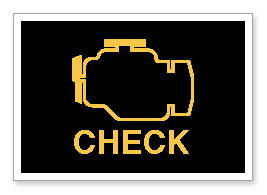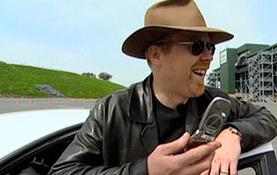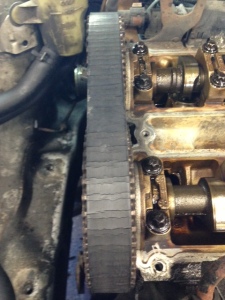 Imagine you have someplace to be and it’s a hot, steamy summer day. You don’t want to arrive a sweaty, wind-blown mess, so you turn on one of the marvels of modern automotive design: the air conditioner. It’s estimated that more than 99 percent of all new cars in the United States have A/C.
Imagine you have someplace to be and it’s a hot, steamy summer day. You don’t want to arrive a sweaty, wind-blown mess, so you turn on one of the marvels of modern automotive design: the air conditioner. It’s estimated that more than 99 percent of all new cars in the United States have A/C.
So how does your car or truck produce that wonderful cool air at the push of a button? Here’s an easy-to-understand explanation, courtesy of edmunds.com. We thought we’d share it with you instead of reinventing the wheel for our A/C article:
Step 1: The compressor is the power unit of the A/C system. It is powered by a drive belt connected to the engine’s crankshaft. When the A/C system is turned on, the compressor pumps out refrigerant vapor under high pressure and high heat to the condenser.
Step 2: The condenser is a device used to change the high-pressure refrigerant vapor to a liquid. It is mounted ahead of the engine’s radiator, and it looks very similar to a radiator with its parallel tubing and tiny cooling fins. If you look through the grille of a car and see what you think is a radiator, it is most likely the condenser. As the car moves, air flowing through the condenser removes heat from the refrigerant, changing it to a liquid state.
Step 3: Refrigerant moves to the receiver-drier. This is the storage tank for the liquid refrigerant. It also removes moisture from the refrigerant. Moisture in the system can freeze and then act similarly to cholesterol in the human blood stream, causing blockage.
Step 4: As the compressor continues to pressurize the system, liquid refrigerant under high pressure is circulated from the receiver-drier to the thermostatic expansion valve. The valve removes pressure from the liquid refrigerant so that it can expand and become refrigerant vapor in the evaporator.
Step 5: The evaporator is very similar to the condenser. It consists of tubes and fins and is usually mounted inside the passenger compartment. As the cold low-pressure refrigerant is released into the evaporator, it vaporizes and absorbs heat from the air in the passenger compartment. As the heat is absorbed, cool air will be available for the occupants of the vehicle. A blower fan inside the passenger compartment helps to distribute the cooler air.
Step 6: The heat-laden, low-pressure refrigerant vapor is then drawn into the compressor to start another refrigeration cycle.
Occasionally A/C systems can go on the blink. If you see any of these symptoms, bring your vehicle in for an A/C check:
- The air conditioning won’t blow any cold air.
- The air that is blowing is weak.
- There is a strange odor in the system when you turn it on.
- The car stalls or idles roughly when the A/C is on.
- The windows fog up and won’t clear up.
- The top and side vents or the defroster aren’t working.









